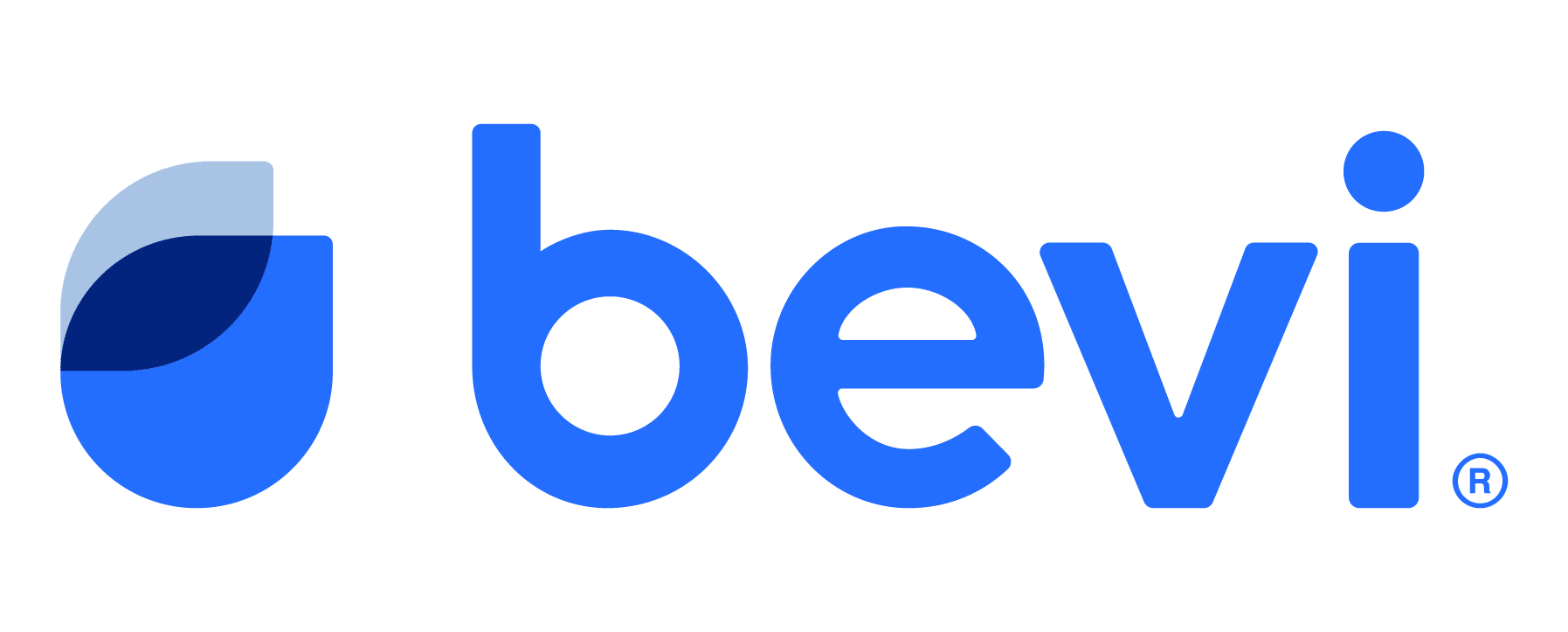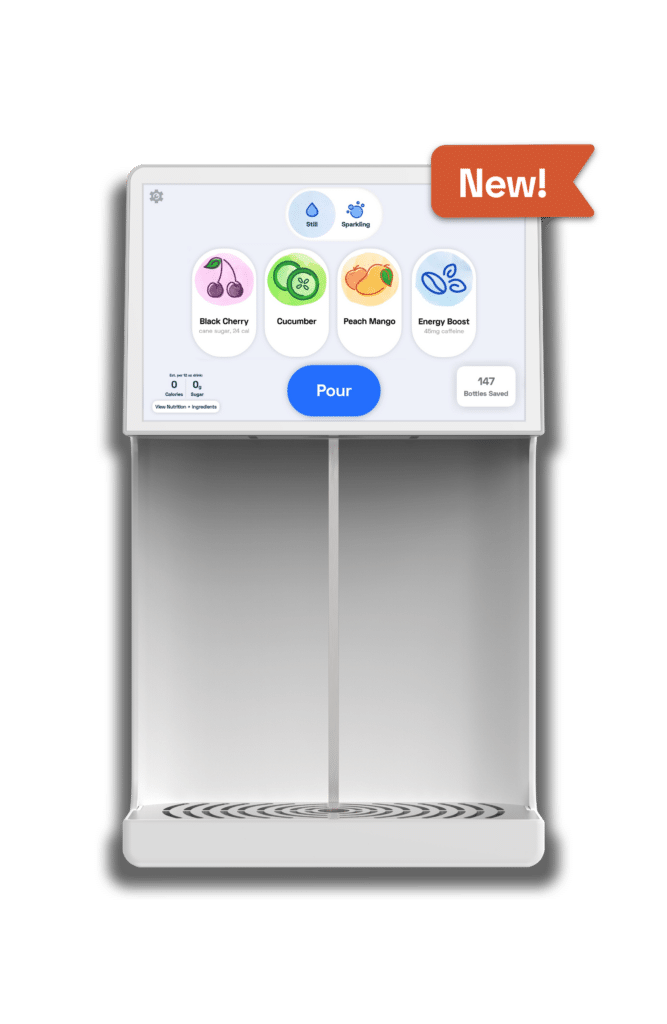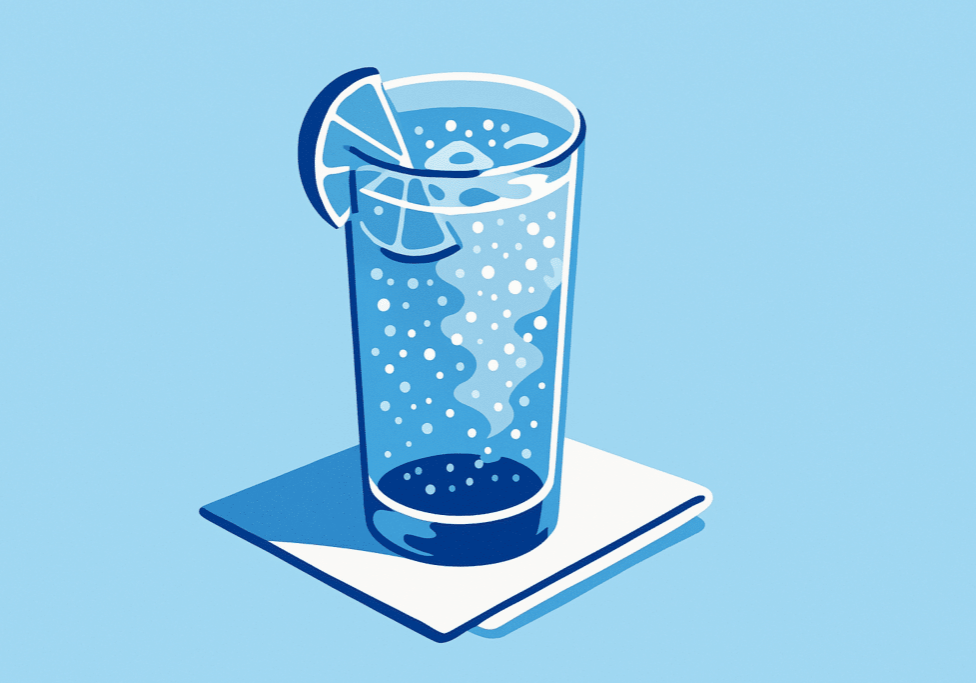May 16, 2024. The year is 2024, and America is more obsessed with sparkling water than ever before.
The casual shopper is bombarded with options upon walking into just about any grocery store. Shelves burst with cans and bottles in every shade of the rainbow. Some brands boast hints of caffeine, or are fortified with an infusion of vitamins and amino acids—all in a bid to stand out in a crowded sparkling water market.
Our shopper may have planned on a simple milk and eggs run, but suddenly they’re dazzled by the cornucopian beverage selection. They sigh and shrug to themselves: they’ve already made the trip, they might as well return home better-hydrated.
The Status of Sparkling Water
If this sounds like you, you’re not alone. Over the past decade, sparkling water obsession has taken the country by storm. Market research from Brainy Insights found that the sparkling water industry is valued at over $30 billion, and dramatically growing with a compound annual growth rate of 12%. This would have the sparkling water industry reaching a value of $93.8 billion by 2030. North America accounts for 30% of the market share for sparkling water. As if trying to set themselves apart, companies are getting experimental with branding, some with enormous success. Apparently people are so crazy for sparkling water they’ll even drink it in the form of a tallboy promising death.
But really, who can blame them? Sparkling water offers the sensory pleasure of carbonation, akin to soda, without the caloric intake or artificial ingredients. It’s the perfect beverage for our era, aligning with the modern ethos of wellness, natural consumption, and sober curiosity. It’s not just a product, but a lifestyle: Gen Z is obsessed with drinking a gallon of water a day, and #WaterTok is a thing now. Scouring the market to find the best fizzy beverage is becoming some content creators’ bread and butter.
So—how did we get there?
The Lore Behind Sparkling Water
Spring water, naturally effervescent from its journey through rock formations or volcanic activity, has long been prized for its purported health benefits. Legend has it that Hannibal and his army took sanctuary in Les Bouillens (“The Bubbles”), the majestic springs in southern France, to recuperate amid their campaigns from Spain to Rome. Against this idyllic backdrop, the soldiers reportedly used the mineral-rich water to rejuvenate and tend to their wounds.
Later the site would gain popularity among European health-seekers. In 1863, Napoleon III officially declared this spring’s output as natural mineral water. A spa developed around Les Bouillens, which became a hotspot for those seeking the therapeutic benefits of its legendary mineral water.
Most of the sparkling water we enjoy today is artificially carbonated, a technique we owe to Joseph Priestley, a young chemist whose serendipitous discovery occurred while living adjacent to a brewery in Leeds, England. Intrigued by the gasses in beer, Priestley speculated they were akin to those in naturally effervescent spring water. His experiments led him to hang a bowl of water above a beer vat, where it absorbed the “fixed air”—carbon dioxide—released during fermentation. Delighted by the “peculiar satisfaction” of the bubbly water he created, Priestley documented his process, unknowingly founding the modern soda water industry.
Despite his pivotal role, Priestley never profited from his innovation. Meanwhile, Johann Jacob Schweppe, a German-Genevan scientist, leveraged this method a few years later to commercialize carbonated water. In 1783, he established the Schweppes company, which soon combined fizzy water with quinine to create tonic water, marking another milestone in beverage history.
OK, but That was a Long Time Ago
In the nineteenth century, sparkling water was largely viewed as a luxury reserved for the affluent elite (for more, see Future Proof’s informative video on the subject). Perrier, sourced from the Les Bouillens springs, was introduced to Britain in 1863 and branded as the “Champagne of mineral water.” During a time when French sophistication was highly sought after, the fizzy drink quickly became a favorite among the British middle classes. The advent of aerating liquid machines in 1903 marked a significant development: they proved so popular that they even had one at Buckingham Palace.
In the mid-1800s, beverage suppliers began experimenting with carbonated water mixed with fruit-flavored syrups, introducing artificially-flavored seltzers with hints of lime, orange, gooseberry, and other sharp tastes. Do you know what comes next? That’s right, soda enters the picture.
After suffering injuries in the Civil War, the Confederate soldier J.S. Pemberton was experimenting with alcoholic concoctions, looking for a morphine alternative. Pemberton first developed a cola wine, which became a hit in the South, sold as a “nerve tonic.” After the 1886 enactment of Prohibition in Atlanta, Pemberton devised a non-alcoholic version using carbonated water, kola nuts, and coca leaves. Soda (or pop, or soda pop…) soon became America’s favorite beverage.
Did you know…
The Fall of Soda and the Rise of Sparkling Water
Throughout the twentieth century, soda consumption soared: annual per capita intake rose from 10.8 gallons in 1950 to a staggering 49.3 gallons by 2000. Initially developed for diabetics, diet sodas featuring new artificial sweeteners such as saccharin, sucralose, and aspartame transitioned into the beverage industry’s flagship products. In 1962, The New York Times reported that 50 million cases of low-calorie soft drinks were sold. From 1963 to 1967, sales of diet sodas doubled, resonating with consumers’ dual desires for indulgence and aspiration, wanting to look like the glamorous actors they saw on television. Throughout the 1950s and ‘60s, major beverage companies launched novel formulas with artificial sweeteners under names like “Tab” and “Canada Dry Glamor,” capitalizing on the era’s newly FDA-approved artificial sweeteners.
But we’ve long heard the expression “there’s no such thing as free lunch,” and America soon learned that there was no such thing as a truly empty calorie, either. In the 1980s, research linked saccharin to cancer in lab rats, leading it to be sold with warning labels, and advocacy groups raised concerns about aspartame potentially leading to headaches, cancer, and neurological issues. In the early 2000s, new studies linked consumption of diet soda with weight gain—ever-so-paradoxically—as artificial sweeteners were shown to increase sugar cravings.
This new research produced skepticism among consumers, and led to a steep decline in soda’s popularity. In 2016, Fortune reported that soda consumption fell to a 30-year low in the U.S., with people turning to choices they deemed healthier, like juices and flavored water. This shift opened up opportunities for sparkling water brands to stand out—even ones that had been around for decades. That same year, for example, Business Insider noted that LaCroix sparkling water, a beverage line that had been founded in 1981, was “suddenly everywhere.”
In contrast to other sparkling water brands, which continued to advertise sparkling water as a luxury product, LaCroix presented itself as an “anti-Perrier” and an “all-occasion beverage.” Avoiding traditional advertising channels and instead using social media marketing and flashy neon packaging, LaCroix appealed to millennials who viewed the product as a niche discovery. As health and wellness trends gained traction in America, major global beverage companies entered the competition, launching their own sparkling water products in the early 2020s. Fizzy drinks are so popular now that hard seltzers are becoming a common choice for alcoholic beverages. The Daily Beast found that, in July 2019, White Claw sales surpassed those of every craft beer brand on the market.
Perhaps consumers are pulled in by word of sparkling waters’ myriad health benefits. Research shows sparkling water is superior to still water in improving indigestion. Because carbonation helps aid the movement of gas out of the body’s system, it can ease bloating and alleviate nausea. Sparkling water can even comfort a sore throat, by activating our swallowing reflexes. Many weight loss coaches recommend sparkling water as a part of a weight loss plan, as sparkling water can prevent unnecessary snacking: a study of nineteen healthy women showed that those who drank sparkling water reported higher scores of fullness. Plus, the whole time you’re staying hydrated—and we all know how important that is.
Enter Bevi
The thing is, all these sparkling beverages in bottles and cans come at a cost.
While the existence of the Great Pacific Garbage Patch was anticipated by climatologists, its actual discovery came unexpectedly by Charles Moore, a racing boat captain, in 1997. Returning to California from Hawaii after a yacht race, Moore and his crew decided to take a shortcut through the North Pacific Subtropical Gyre, an area rarely traveled by fisherman. Here, Moore described being “confronted, as far as the eye could see, with the sight of plastic,” gazing out from the deck on “what ought to have been a pristine ocean.” Over the week it took to cross the gyre, Moore was surrounded by plastic bottles, wrappers, and smaller fragments: remnants of human consumption. Upon his return, Moore shared his observations with Curtis Ebbesmeyer, a prominent oceanographer. The term “Great Pacific Garbage Patch” would soon enter the lexicon, as researchers came to understand the effects of massive plastic waste in the early 21st century.
Researchers found disposed plastic was being sucked into the gyre’s circulating currents. Because they were not biodegradable, plastic was being broken down by the sun and the water into smaller and smaller fragments—what we now refer to as microplastics. This debris poses significant threats not only to larger marine species but disrupts the entire marine ecosystem, as the dense layer of plastic floating on the water’s surface impedes sunlight, essential for the survival of plankton and algae, which support the ocean’s complex food webs.
Given the challenges in removing such fragmented marine debris, scientists concur that the most effective method to address the Great Pacific Garbage Patch is to cut down on our use of disposable plastics. Despite ongoing efforts, there is much to be done. According to Bevi’s 2024 Environmental Sustainability Report, over 14 million tons of plastic are dumped into the oceans annually, with plastic bottles accounting for 12% of this waste. The most wild thing of all? With Bevi’sSmart Water Cooler® beverage machine, this single-use plastic waste is unnecessary.
Bevi stands out for its environmental benefits by offering a smart, eco-friendly alternative to bottled beverages. Each Bevi machine eliminates the need for single-use plastic bottles and cans of filtered still, sparkling, and flavored water, thereby cutting down on plastic waste significantly. People can enjoy water the way they like it. And there’s even the option to have full sparkling—maximum bubbles—or light sparkling, which still has a bite, but not that much. This optionality not only minimizes the environmental impact associated with the production and transportation of bottled beverages but also promotes healthier lifestyle choices.
Bevi started with the idea that people shouldn’t have to choose between what’s good for you and what’s good for the planet. Since Bevi’s Smart Water Cooler® beverage machines entered the market in 2013, they have already collectively replaced over 500 million bottles and cans, while offering office workers across the country unparalleled options for beverage customization. Bevi machines are now bringing sparkling goodness to office spaces, warehouses, residential buildings, airport lounges, and even car dealerships across the country. It’s the “next-generation water cooler” for the conscientious consumer. And it will continue delivering bubbly goodness without the plastic waste.






